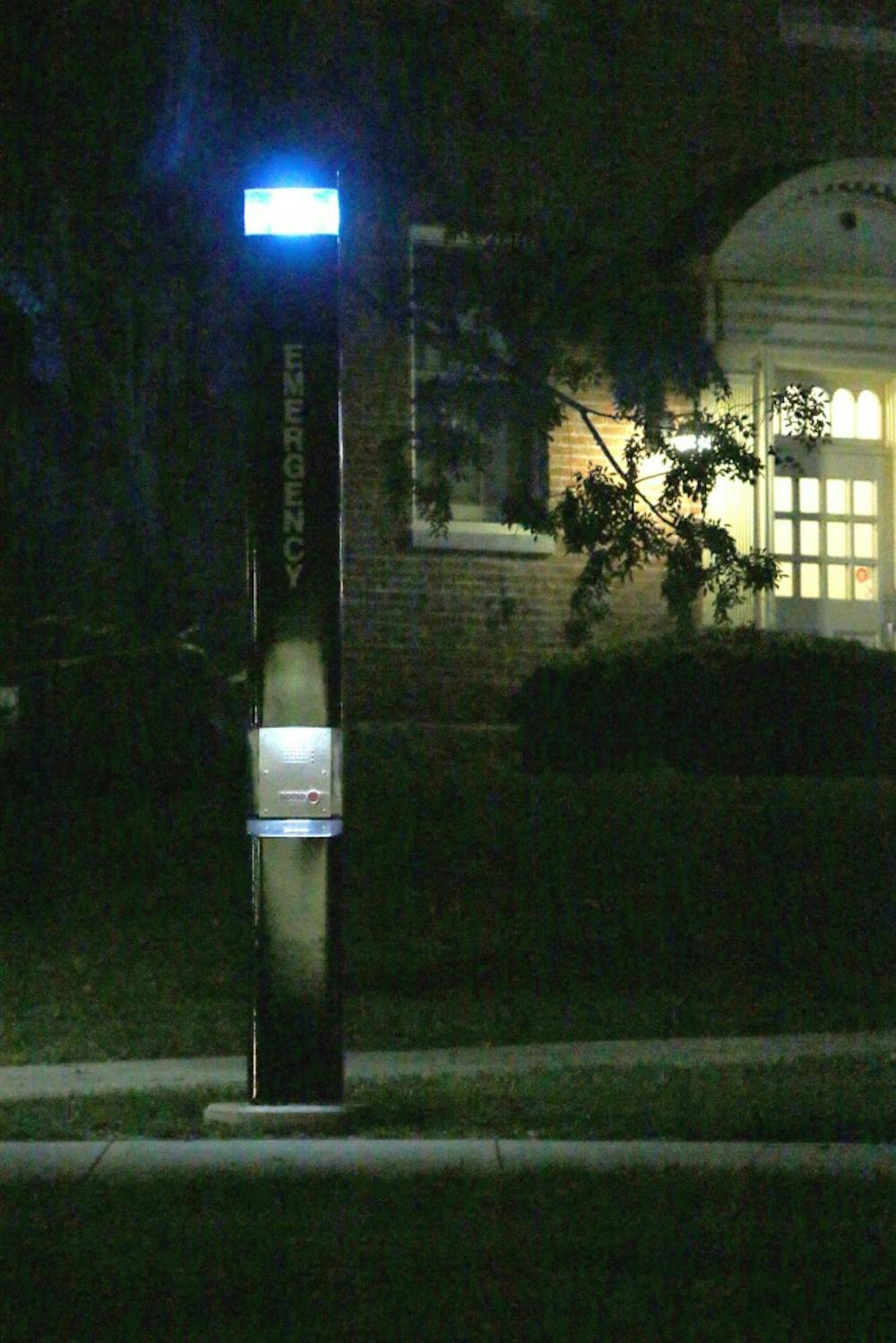[et_pb_section bb_built="1"][et_pb_row][et_pb_column type="4_4"][et_pb_text]
Since Jan. 1 of this year, the blue emergency lights around campus have been used to contact the MUPD 20 times. One of these calls was to report a stray manhole cover, and several others were to request vehicle assistance or directions. None were crime-related emergencies.
But Cpt. Ben Spilman of the Miami University Police Department (MUPD) said they still serve a purpose, even if it is just to comfort current and prospective students, as well as their parents.
"I think that people expect to see them on campus," said Spilman. "I think that if we had a campus that did not have any at all, people would wonder, where are they, why do we not have them, or what is in place to take their place?"
Director of Admissions Susan Schaurer cited the blue emergency lights as a safety measure tour guides discuss with prospective students and parents, but junior guide Vivian Drury said they're not usually something people inquire further about.
"We always talk about them on campus and point them out," said Drury. "Parents ask more generally just about campus safety."
The blue light-topped structures were installed three years ago at $10,000 apiece, replacing outdated yellow call boxes. They now stand at 17 locations across campus, from slant walk to Ditmer Field, and each has the ability to broadcast MUPD alerts and provide Wi-Fi outdoors.
"In replacing these, we wanted to make sure they served more of a purpose than just being a place where somebody would go to push a button to get help," said Spilman, "because we knew that that didn't happen all that often anyway."
Spilman says he can recall the boxes being used more frequently, before everyone had a cell phone, but those instances were still "few and far between."
They occur even less now. Spilman said he can't recall a time when he's responded to crime-related emergency circumstances at any of the boxes, but the MUPD is accustomed to car trouble assistance, people in need of directions and prank calls. The box that generates the most calls isn't even on campus, but one situated in Peffer Park, and it's usually kids pushing the button as a joke.
Even if they're summoned to a box to find the caller gone, however, Spilman said he doesn't see it as a total loss because it still gives the MUPD the chance to patrol the area. They'll also likely come in handy, he said, in the case of a campus-wide emergency. In an emergency messaging system test conducted earlier this year, the MUPD found that most students were outside and would have been able to hear a message broadcasted by the call boxes if they weren't checking their phones.
"There will probably be a time in the future where they're just completely outdated, you know, where you don't have something like that in public spaces," said Spilman. "But I think right now that's kind of what's expected on campus."
Enjoy what you're reading?
Signup for our newsletter
daviskn3@miamioh.edu
[/et_pb_text][/et_pb_column][/et_pb_row][/et_pb_section]




